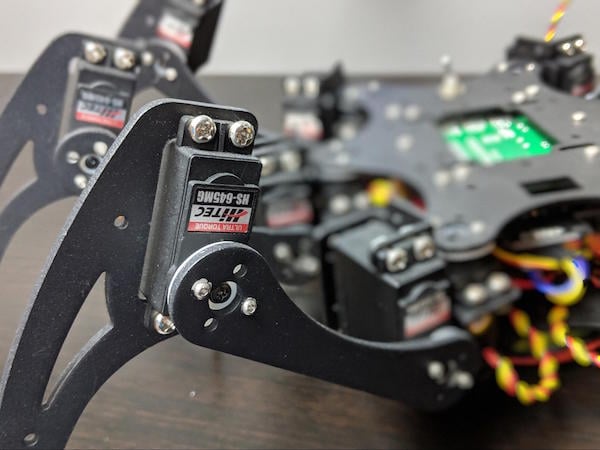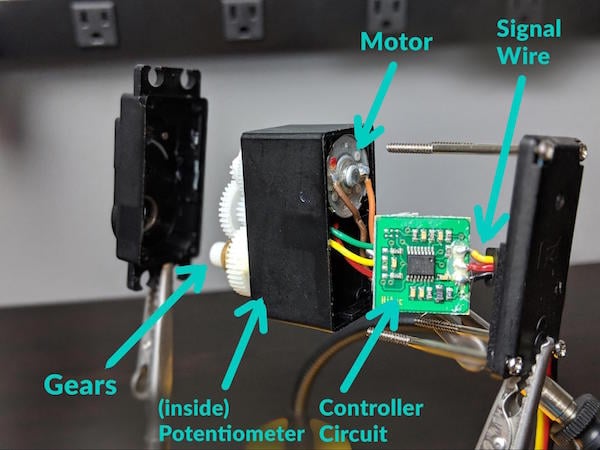Learn the ins and outs of servo motors and the pros and cons of choosing this type of motor for your project.
If you're working on a project that has a moving part, you'll probably be looking for a motor to make that movement possible. In this series, we explore the most popular types of motors that makers utilize. First, we covered brushed DC motors and next moved on to brushless motors.
To read up on what types of projects that servo motors work best in, check out the round-up:
What Type of Motor is Best for My Project?
While brushed and brushless DC motors are closely related, servo motors offer a different type of movement and power.
Servo Motor Overview
Servo motors are a specialized type of motor that, unlike most other motors, are designed for precise positioning rather than controllable speed. This makes them a good choice when building robots.
Servos are used extensively in robots because they allow robot controllers to position joints to exact angles.
So, unlike the brushed DC motors discussed in the previous section, that can be made to operate at specific speeds by applying different voltages, with a servo, a computer sends a signal that commands a servo to move to a particular angle:
myservo.write(90); // set servo to 90 degrees (its mid-point)
How do Servo Motors Work?
The construction of a servo motor is quite a bit more complex than a brushed DC motor.
The main working parts of a servo motor.
The core of a servo motor, the actual motor inside a servo, is a brushed DC motor, just like the ones discussed above.
However, in addition to this motor, there are a couple other components that make a servo unique from other types of motors. It’s all to do with positioning.
At the top of the motor, under the upper cover, there is a set of gears. These gears accomplish two main purposes:
- They give the motor mechanical advantage, producing more torque than the motor outputs on its own.
- The gears link together the motor and a positioning sensor. In most servos, the positioning sensor is a potentiometer. The potentiometer allows the servo to know the exact angle of the motor shaft (called the servo horn).
Finally, a servo is controlled by an on-board
circuit board that translates commands from an attached computer via a signal wire to motor movements.
Servo Motor Pros
Absolute Positioning System
The main point of using a servo is because they allow for a computer to set a specific angle to which the motor will move. More than that, however, if the servo moves, the controller can query the motor to determine its angle.
High Torque at High Speed
Thanks to their gearing system, servos are able to generate high amounts of torque and also move at high speeds.
High Holding Torque
Another benefit to using a servo is that, once it is set to a particular angle, the servo will oppose forces trying to move it out of position. If the force the servo experiences is too much for the servo to hold, and the motor moves out of position, it will move back again once the force is removed.
Servo Motor Cons
Mechanically Complex
Servos combine a brushed DC motor, a potentiometer, a complicated set of gears, and a controller PCB. This complexity means there are a greater number of potential points of failure compared with other motor types.
Expensive
Because of their complexity, servos (especially high-performance models) can get expensive.
Challenging to Design Around
Compared to other types of motors that can be mounted into holes or with standard mounting hole patterns, servos are somewhat more difficult to incorporate into designs.
The motor shaft is offset from the center of the case, as are the mounting flanges. There is no pivot point on the back side of the enclosure. The top of the motor is not completely flat. All of these factors combine to make incorporating servos into your designs a bit tricky.






